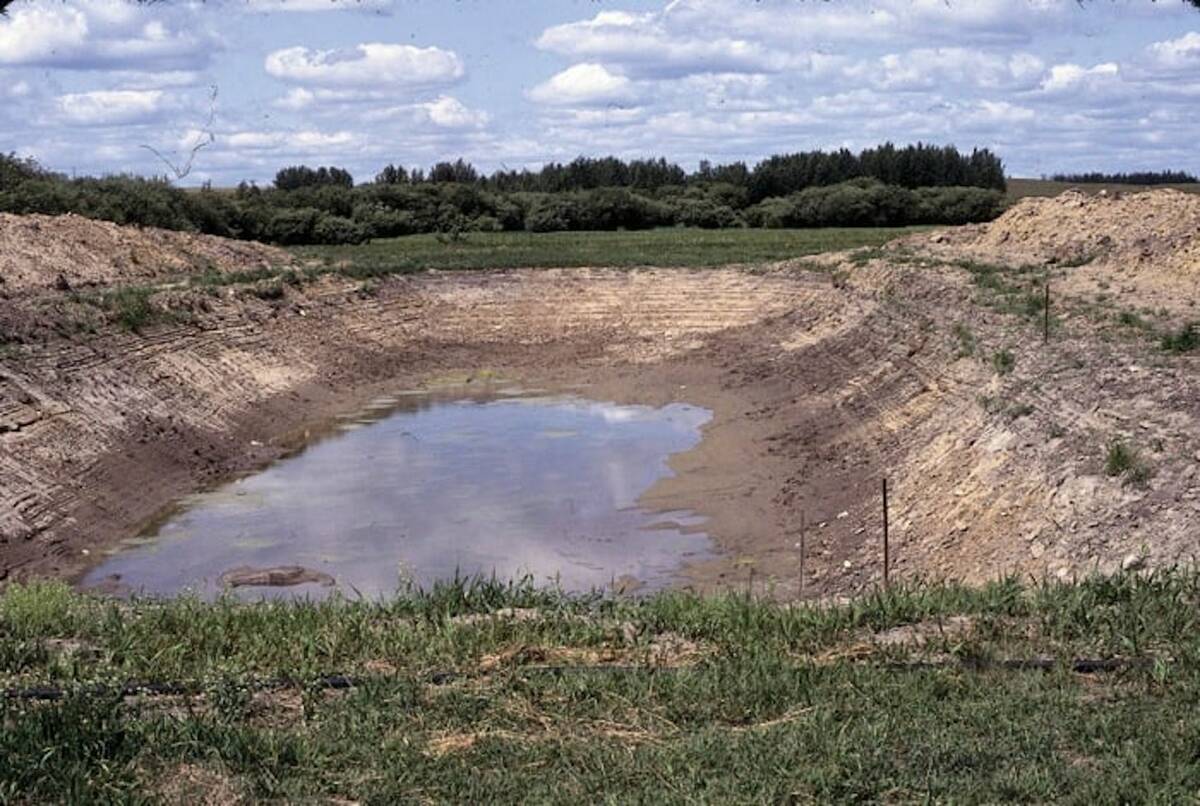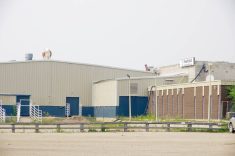ROCKY MOUNTAIN HOUSE, Alta. – When master spinner Joanna Head sees fibre lying around a buffalo paddock, she can’t help herself.
She is constantly gathering pieces of hair and fluff that the animals shed in the pasture. She then settles down in her workshop to pick out the finest fibre to spin and weave.
“You can’t leave all that good down going to waste on the ground,” she said.
Working with hair shed from Bashkir Curly horses and bison raised on the Rocky Mountain House, Alta., ranch she owns with her husband, Mike, she spends hours experimenting with the fibre.
Read Also

Dry summer conditions can lead to poor water quality for livestock
Drought conditions in the Prairies has led to an decrease in water quality, and producers are being advised to closely monitor water quality for their animals.
She and another bison breeder from Peace River, Alta., recently sent 13 pounds of bison hair to an exotic fibre mill at Innisfail, Alta., and got back an acceptable product.
While horse hair is more coarse and more suitable for rugs, the soft, brown down that bison shed each spring can be worked into a silky yarn.
Bison leave guard hairs in the down that must be painstakingly picked out by hand. She eventually hopes to collect enough fibre so it can go through a dehairing machine, which cannot handle small amounts of fibre.
The down is worth about $16 a pound and she regularly reminds other breeders to save their down for her.
Joanna used to raise Angora goats and was a senior goat judge in Ontario with her mother before she came to Alberta and married Mike in 1997.
“Angora goats are difficult to raise because of the winters and they take so much care. It’s so nice to have animals that can take minus 40.”
Mike bought the farm in 1993 and together he and Joanna started looking for livestock that are easy to care for. Their four bison arrived this year. They hope to build up to a herd of about 20 bison complemented by six curly horses.
Because they have children, they want their animals to be as tame as possible.
“Some people raise the bison as naturally as they can. They let them range all winter,” Mike said. “We’re feeding these so they can get used to us.”
Both breeds are a long-term investment.
Bison are considered the ranch’s bread and butter, while horses are a longer-term investment that are expected to build value over time.
“There’s very little point in us going into cattle with only a quarter section,” he said.
Both breeds are reasonably priced, allowing ordinary people to get into the business.
The Heads are also interested in tourism. Rocky Mountain House holds a special place in western history. Here, explorers like David Thompson mapped out unknown territory controlled by Hudson’s Bay Company.
Bringing back bison and an ancient breed of horse fits into the area so they can capitalize on tourists’ interests by offering trail rides and sightseeing.
Curly red locks
They have had curly horses for three breeding seasons and own one mare, two fillies, a stallion and two geldings. Their yearling filly, Aurora, displays striking red curly hair as it poses in the pasture for a photograph.
These horses are in their glory during the winter because their coats are full. By spring they start to shed down to bare tails and no manes. The hair immediately starts to regrow.
Ironically, a curly horse can also have straight hair. It is not uncommon for a straight-haired animal to be the parent of one with curly hair.
The breed is hypoallergenic, making it attractive to horse lovers who are forced to stay away from other breeds because of allergies.
“We tell everybody to bring their medication because there is still the odd person who will react to these,” Mike said.
Registered with the American Bashkir Curly Association based in Ely, Nevada, the horses remain relatively unknown. The association started in 1991 and Canada recently formed its own association.
“If the breed is going to go anywhere, it’s going to have to be shown to raise their profile,” Joanna said.
There are 3,000 registered in North America and 300 are in Canada, mostly in Alberta. Crossbred horses can be registered, but only males of stallion quality can be registered. The others are gelded.
Their history is fuzzy.
It is thought to have descended from the Lokai horse in Russia near the Khyber Pass.
The hair coat ranges from straight to curly with a corkscrew-curled tail and mane. It comes in an array of colors ranging from chestnut, bay, palomino and pinto. Conformation resembles the early Morgan.
Indians called them buffalo horses because of the curly coat, and it is known they have been in North America for at least 200 years.
The association website address is www.telusplanet.net/public/spirit/home.html.

















